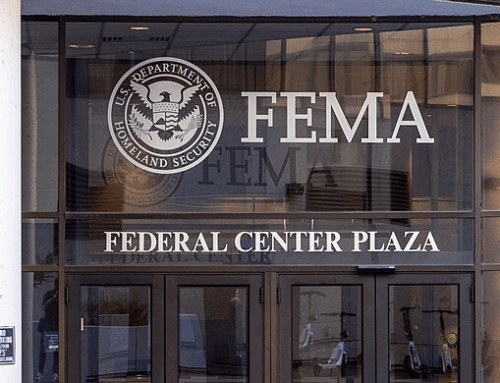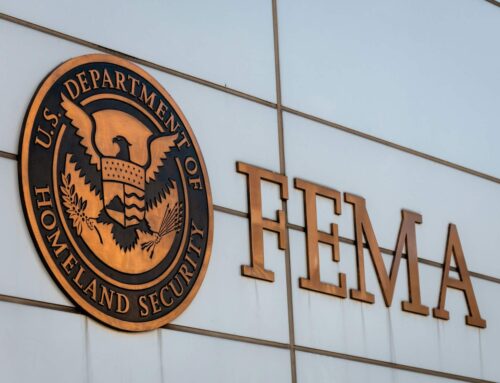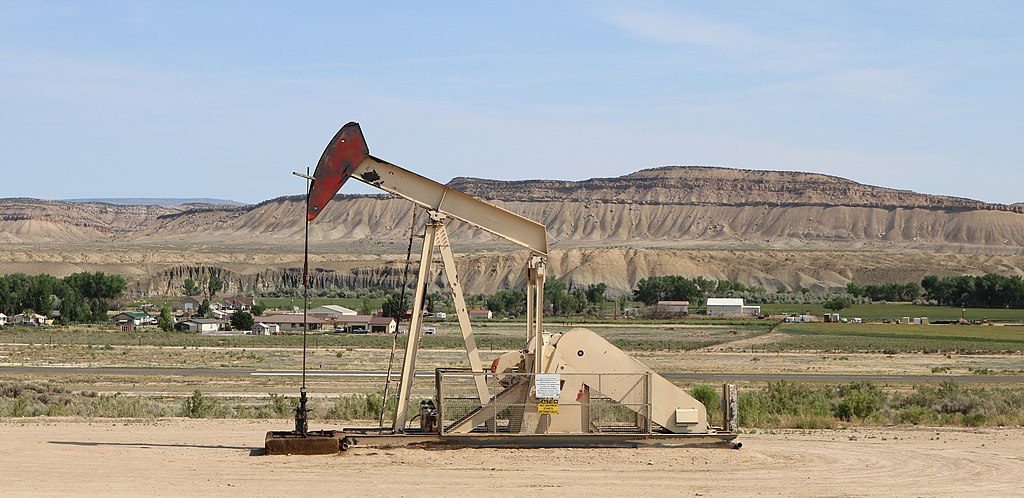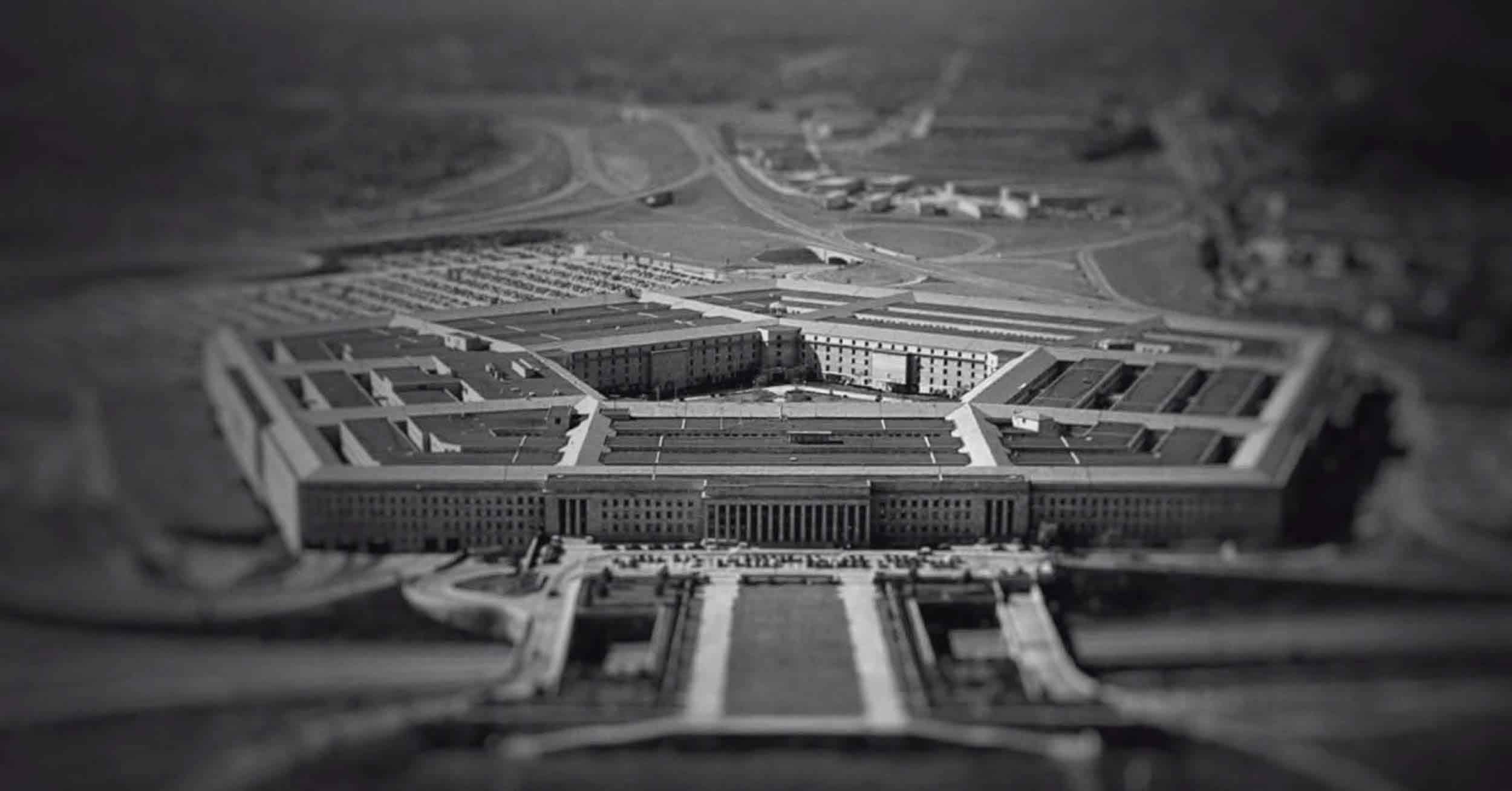What is the role of the federal government in responding to disaster, particularly when the tragedy is manmade? TCS President Steve Ellis is joined by Michael Surrusco and Chris Howe-Smith for a discussion about the Baltimore bridge collapse and the financial impact on taxpayers.
Transcript
Announcer:
Welcome to Budget Watchdog All Federal, the podcast dedicated to making sense of the budget spending and tax issues facing the nation. Cut through the partisan rhetoric and talking points for the facts about what’s being talked about, bandied about and pushed to Washington, brought to you by taxpayers for common sense. And now the host of Budget Watchdog AF TCS President Steve Ellis.
Steve Ellis:
Welcome to All American Taxpayers Seeking Common Sense. You’ve made it to the right place for nearly 30 years. TCS that’s taxpayers for common sense, has served as an independent nonpartisan budget watchdog group based in Washington DC We believe in fiscal policy for America that is based on facts. We believe in transparency and accountability because no matter where you are on the political spectrum, no one wants to see their tax dollars wasted. At approximately 1:30 AM on Tuesday, March 26th, 2024, Baltimore’s Francis Scott Key Bridge was struck by a cargo ship leaving the Port of Baltimore and Baltimore, Maryland. Six members of a road construction crew were killed when the 984 foot cargo ship hit the bridges pillar causing it to collapse hours after the incident. Federal leaders, including President Joe Biden and Secretary of Transportation, Pete Buttigieg, pledged federal funds to expedite the bridge’s reconstruction. But what is the role of the federal government in responding to disaster, particularly when the tragedy is manmade? Joining me now to discuss this and other questions relevant to taxpayers is TCS Director of campaigns, Mike Risco and TCS research associate. Chris, how Smith, Mike and Chris, thanks for being here.
Michael Surrusco:
Thanks for having me, Steve.
Chris Howe-Smith:
Great to be here, Steve.
Steve Ellis:
Of course. Alright, Mike, let’s start with you. Do taxpayers have a right to be concerned about footing the bill for a manmade tragedy even before the responsible party or parties turn to their insurance companies?
Michael Surrusco:
Well, as you probably would expect, the answer is yes. So this event raises a number of interesting questions about how the federal government is responsible for responding to disasters. While infrastructure, security and resilience efforts have been focused heavily on things like terrorism, cyber-attacks, and natural disasters caused by climate change, something TCS has spent a lot of time working on too. The Key Bridge collapse shows that there are broader risks, non-malicious risks that can be equally devastating as we saw here with the Collapsed bridge, both interrupts the traffic flow for the Baltimore Beltway and for commerce into the port itself. So in the end, years of risk management and substantial investments by the federal government and anti-terrorism measures and specifically obviously don’t affect things like this. And so it showed, so this instance has shown that there’s a clear need to assess some of the vulnerabilities of our critical infrastructure.
Steve Ellis:
Somewhat astonishing to hear that a potential collision such as this was regarded as largely hypothetical or not even really considered. Chris, could you expand on the federal and state measures that were in place before this incident? Yeah,
Chris Howe-Smith:
Absolutely. So at the federal level, the Department of Homeland Security and the Department of Transportation manage Risk Management partnerships focusing primarily on information sharing and direct security assistance. However, these efforts predominantly target intentional acts of disruption. So for example, the Biden Administration’s executive order back in February, 2024, expanded the Coast Guard’s authority to control vessels presenting cyber threats, but it didn’t actually address the physical security from accidental collisions.
Steve Ellis:
Okay, so there’s a shortfall or at least some shortsightedness there. What about at the state
Chris Howe-Smith:
Level? At the state level, while Maryland’s authorities did receive funding for enhancing maritime security, including patrols and structural inspections, there was a significant oversight regarding the fiscal protection of Bridgeport against ship collisions. It’s a gap that unfortunately became evident only after the Key Bridge tragedy. That seems like common sense, right? In fact, back in 1980, shortly after the bridge was completed, a ship collided with a dolphin, which is basically a big protective slab in the water, which is designed to prevent a disaster like we just saw. And today’s ships are significantly larger than we’re in an operation back then. This is what was called a Panamax ship, which is largest ship that can make it to the Panama Canal. And so unfortunately our protective infrastructure wasn’t prepared there and it really should be keeping up on the times.
Steve Ellis:
Yeah. When you start talking about container ships, it’s like Panamax Post Panamax Panax Plus, it’s like there’s a whole litany of them, but bottom line is at nearly a thousand feet long, it’s a big ship, and every Mariner worth their salt knows that a dead ship is a possibility. Even me, the engines tripped offline on the ship that I served on in the Coast Guard. It just happens. So what are some of the actions being considered to prevent such incidents in the future, Mike?
Michael Surrusco:
Well, Chris mentioned the Dolphin, which is a project that began in July of last year, or one of the projects that’s partly funded by grants from the Department of Transportation and will be completed by September, 2025. And the Key bridge was one of the bridges that was scheduled to receive an upgrade. And after the collapse, there was a lot of reporting on how insufficient the barriers were for that bridge, especially considering how big the boats are that are going into the Baltimore Harbor.
Steve Ellis:
Yeah, it’s really about thinking forward about what are all the possibilities and being creative. If you would. Post nine 11, the New York New Jersey Port Authority realized they had a significant risk at the George Washington double decked bridge crossing the Hudson, where they realized where if a truck with explosives was at the right spot on the lower deck, it could bring the entire bridge down. But instead of putting a lot of money into a elaborate safeguards, they came up with a very simple solution. No trucks on the lower deck, all trucks have to go on the upper deck, which then eliminated that potential risk. So it’s really about looking around the corner of intentional and unintentional disasters that are out looming out there. And clearly, as Chris alluded to two things. One is they had an incident at this very bridge. Two is they kind of recognized that the need to increase the security, but were pretty slow doing it. It’s not like there hasn’t been bridge impacts by barges or by ships. In one analysis that was done in 2000, they found that in the previous 30 plus years there have been 30 strikes of bridges by other vessels. So clearly this is something that happened just like I alluded to about ships trip offline. Okay. So Chris, even when culpability is easily established, we’re talking about the various actors here. What’s the timeframe for determining financial liability and are taxpayers hurt or help by footing the bill and the immediate response?
Chris Howe-Smith:
Yeah, so determining financial liability, even when culpability is clear, can be a really lengthy process. It involves legal proceedings, it involves insurance claims assessments, and even potentially it involves negotiations between the involved parties. So the process can span months to years depending on the complexity of the case, the number of parties involved in a whole myriad of other factors. And so to answer your question, taxpayers can be both hurt and helped by footing the bill for the immediate response. On one hand, immediate federal funding ensures a swift response to disasters. It mitigates further damage and it aids the affected communities quickly. But on the other hand, reliance on taxpayer dollars for upfront costs and constrain federal resources, especially if recovery from responsible parties is delayed or even insufficient.
Steve Ellis:
Yeah, I’ve seen that in this case, the federal response, working with the state and trying to remove parts of the fallen and bridge structure, they’re able to open a 35 foot deep channel there. And so it’s something where this will allow some traffic through to enable the Port of Baltimore, which is a significant port in this country, especially for auto imports to operate, but then allow the construction and reconstruction to go along. And I guess talking about the liability, Chris, at least according to the media reports, the ship, the port and the bridge were all insured and the cause of engine failure could have been from contaminated fuel. So that’s a lot of fingers pointing at one another that could make it take a while, which is why Uncle Sam steps in at least initially and then hopefully gets heavy handed later to make sure that taxpayers are covered. Okay. Mike, budget watchdog AF listeners know that the federal government has an array of accounts, agencies and mechanisms for disaster related expenses. Is current emergency funding for damaged infrastructure substantial enough?
Michael Surrusco:
Well, no, I think is the short answer to that. So current emergency funding mechanisms like the Disaster Relief Fund within fema, which is the main account that funds immediate relief and support for damaged infrastructure and recovery efforts are under strain. So the increasing frequency and severity of disasters is something that we’ve talked about a lot on this podcast and we’ve written a lot about it. And there is concern among obviously TCS and others that the structure and the process for budgeting for disasters is not sustainable. And just to repeat some of the statistics that we’ve cited in the past, the US experienced 28 billion weather related disaster events in last year that broke the previous record from 2020 when there was 22 billion weather related disaster events. And all of this is part of the argument that we’ve been making. This is just another example of the truth that disaster planning and spending over the next 50 years cannot look like it did over the past 50 years.
Steve Ellis:
Looking at the DRF, and really, as you pointed out, it’s the climate related natural disasters that this is funding. But Chris, you recently wrote about the e response program, ERP and how that ties in this case and how is that funded and structured?
Chris Howe-Smith:
Yeah, so the ERP is a program set up under the Highway Trust Fund, which basically allows money to be drawn when a disaster is declared. There’s a multi-step process that involves emergency declarations. In the case of the Maryland disaster, I believe it was the next day, governor Westmore declared an emergency and then Secretary Buttigieg announced that $60 million worth of that money from a $100 million annual appropriation became available to essentially as a down payment on recovery and cleanup efforts. So drawing from there, that has been around largely since 1998. And in the time since 1998, we have had 19 disasters which have exceeded the annual appropriation. So that sets to attune of about 21 billion in supplemental appropriations that have been given by Congress. And that basically breaks down to annual appropriations accounting for only approximately 8% of the spending that’s gone towards infrastructure disasters. So clearly the funding that has been set out isn’t enough and is really drawing on extra resources. So something’s got to change there.
Steve Ellis:
Yeah, because as Mike is talking about underfunding for the DRF and we’re talking, that gets billions in the double digit, billions of dollars a year and is tapped and then is overwhelmed. And the ERP, while hopefully most years, you don’t have some sort of infrastructure related disaster that needs to be tapped, but clearly a hundred million where it’s been pegged for decades is not adequate and is not going to answer the bill. And so then they’re going to come for emergency funding, which budget watchdog, a faithful knows, comes from off the books. It’s not budgeted for. And so it doesn’t compete within the federal budget. And so it’s, again, it just underscores the failure on federal budgeting for disaster. So let’s look at some other recent infrastructure related disaster cases. I mean, what can we glean from the federal response to events like the January, 2023 train derailment in East Palestine, Ohio or the 2010 Deep Horizon oil spill in the Gulf of Mexico?
Chris Howe-Smith:
So there are several key lessons from the federal response in East Palestine, the train derailment as well as the deep water horizon oil spill. So first, a robust and coordinated federal response is crucial in managing disaster impacts effectively. And you can see that in natural disasters as well as these infrastructure disasters. So that includes agencies like the EPA FEMA and the NTSB played. They played key roles in both instance highlighting the importance of interagency collaboration.
Steve Ellis:
Chris, you mentioned NTSB, the National Transportation Safety Board. What about something like that for disasters? I mean, we spent billions of dollars on disasters, but don’t even seem to try to learn from them what should be done.
Chris Howe-Smith:
Well, Steve, that was a leading question, but one thing that TCS has advocated for in the past is the creation of a National Disaster Safety Board, which would be modeled on the existing National Transportation Safety Board, which would be used to learn from experiences like the Durrell in Ohio, communicate those findings to the public. And the examples that we see here, they really underscore the need for clear communication and transparency with the public to address safety concerns and information. I mean, in the wake of natural infrastructure disasters, you see lots of misinformation and those could perpetuate for years. For example, issues with Gulf shrimp falling the BP disaster that hit for years because it wasn’t clearly demonstrated that it was safe to eat. But lastly, these cases illustrate the challenges of disaster recovery and the importance of holding responsible parties accountable for environmental and economic damages as seen with BP’s financial liabilities falling a deep water horizon bill. And we’re not alone. TCS isn’t alone in advocating for this. In fact, in this Congress, there has been a bill introduced to create just an NDSB and we’ve been in support of that, and that would really help set the stage for better disaster response in the future.
Steve Ellis:
It is kind of crazy when you think about it, and I’m not saying it isn’t tragedy, but you have a single pilot or a single pilot private plane that goes down in Virginia a year or so ago, and N TSB is investigating to figure out what happened. And I can understand that that makes sense. But then you have a major disaster like Hurricane Harvey or Ike and both in Houston. And so you figure, well, maybe we could learn something from Ike and the response that’ll help us dealing with Harvey or in other instances where we can apply lessons learned across the board. And that’s something that is just severely lacking. It’s a real blind spot for the federal government. So Mike, how should the feds and states approach these cases so as not to always have to reach an Uncle Sam’s pocket first?
Michael Surrusco:
Well, to minimize the initial reliance on federal funds after a disaster occurs, feds and the states should focus on a couple of things. They should enhance their preparedness and resilience through infrastructure and community planning to reduce the impact of disasters that we know are going to happen and that we can imagine that would happen. And this will greatly reduce the immediate need for repair and recovery that Uncle Sam has to pay for out of pocket at the beginning. And some of these plans are, we have specific plans within FEMA, the community development resilience zones, for example, that targets districts by census, track by risk assessments to channel money to help fund that preparedness and resilience. So that’s one important thing that can be done nationally and locally that will make a big difference. It’s sort of intuitive if you think about it. And then another strategy, and I think we’ve seen with this or we’ll find out, I guess, establishing clear lines of liability and insurance requirements for industries that pose significant disaster risks to critical infrastructure. And obviously that’s going to be important here. As you mentioned before, Steve, about all the things that are insured and then was there a problem with the fuel, et cetera, et cetera. So that is going to be illegal knot that will have to be untangled. And then I think I’ll just repeat what Chris said, the importance of having some mechanism to come in after the fact and draw some lessons that can then be applied going forward, both in prevention and response.
Steve Ellis:
Thanks, Mike. And yeah, those community development resilience zones, CDRZ or as the cool kids call it Cedars. There was a legislation that we supported strongly last Congress that has gone into effect, and it’s across the country, it is in every single state. And it targets these census tracks, as Mike said, to have them get greater access to mitigation funds where it’s absolutely needed. And so it’s a forward thinking and it’s a mitigation approach. And also, as much as there is a Gordian knot sometimes with this insurance and who’s got the liability, it’s important to note that there was insurance. And so that’s something where public entities should be ensuring public infrastructure rather than expecting post-disaster payments for this. And that could be a much cheaper way to lay off that risk onto the private sector rather than taking it onto the private sector. You have events such as the Super Bowl that are insured, so don’t tell me that you can’t insure a highway or a bridge in this case, which they were, and to mitigate the impacts on taxpayers.
And that’s the responsible work that should be done by the locality and by the state TCS Director of campaigns, Mike Risco and TCS research associate. Chris, how Smith, thanks for representing the TCS team on the pod today. Thanks, Steve. Thanks for having me on. Well, there you have it podcast listeners, when disaster strikes, it always hits taxpayers directly and indirectly. This is the frequency. Mark it on your dial, subscribe and share and know this taxpayers for common sense has your back America. We read the bills, monitor the earmarks, and highlight those wasteful programs that poorly spent our money and shift long-term risk to taxpayers. We’ll be back with a new episode soon. I hope you meet us right here to learn more.










